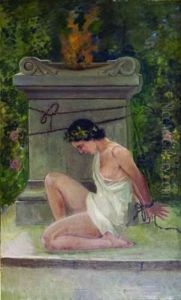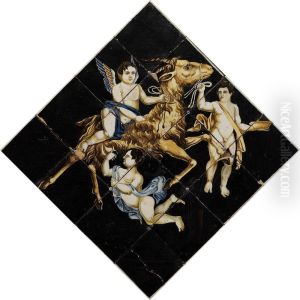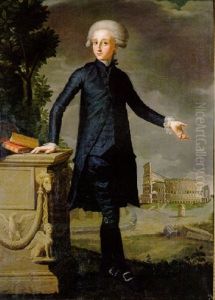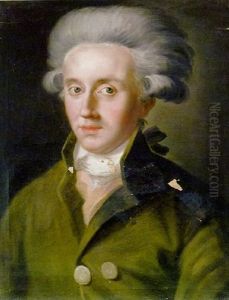Francisco Agustin Y Grande Paintings
Francisco Agustín Grande was a Spanish painter and engraver born in 1753, during a period that was deeply influenced by the Enlightenment in Europe. Although not as widely known as some of his contemporaries, Grande made contributions to the Spanish art scene, particularly in the second half of the 18th century.
Grande's artistic training took place at the Real Academia de Bellas Artes de San Fernando in Madrid, which was the leading art institution in Spain at the time. He was a student of the painter and printmaker Francisco Bayeu y Subías, who was a prominent figure in Spanish art and also a brother-in-law to Francisco Goya, one of the most famous Spanish artists of all time. Under Bayeu's guidance, Grande honed his skills in painting and developed a style that reflected the preferences of the late Baroque and early Neoclassicism.
Despite the lack of extensive records on his life, Grande's works suggest he was adept in religious iconography, which was a significant theme in Spanish art due to the Counter-Reformation and the influence of the Catholic Church. His engravings also show a mastery of the medium, and he contributed to the dissemination of the works of other artists through his prints.
Grande's career unfolded in a time of great change in Spain, as the country grappled with the aftermath of the War of Spanish Succession and the Enlightenment's impact on Spanish society, politics, and culture. His lifespan also coincided with the early period of Spanish colonial decline, where shifts in power and trade began to reshape the Spanish Empire.
Francisco Agustín Grande died in 1800. While he may not have achieved the same level of fame as some of his peers, his work remains a part of the rich tapestry of Spanish art history. His contributions continue to be studied by scholars interested in the art of this transitional period between the Baroque and Neoclassical styles.



